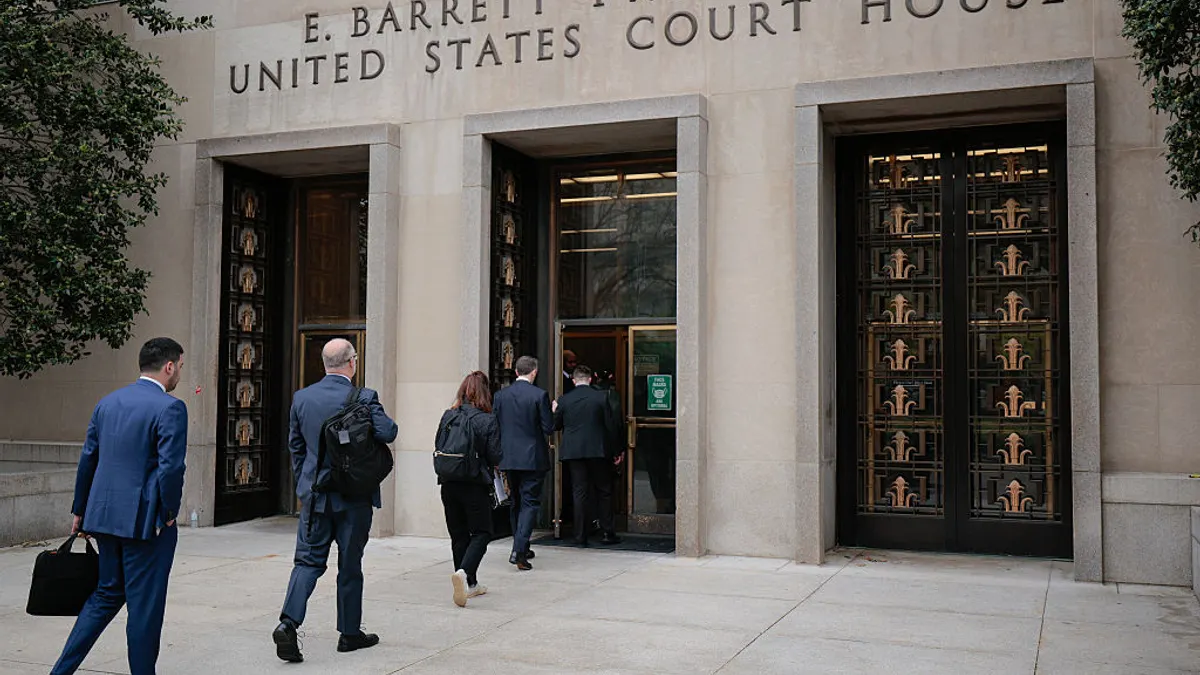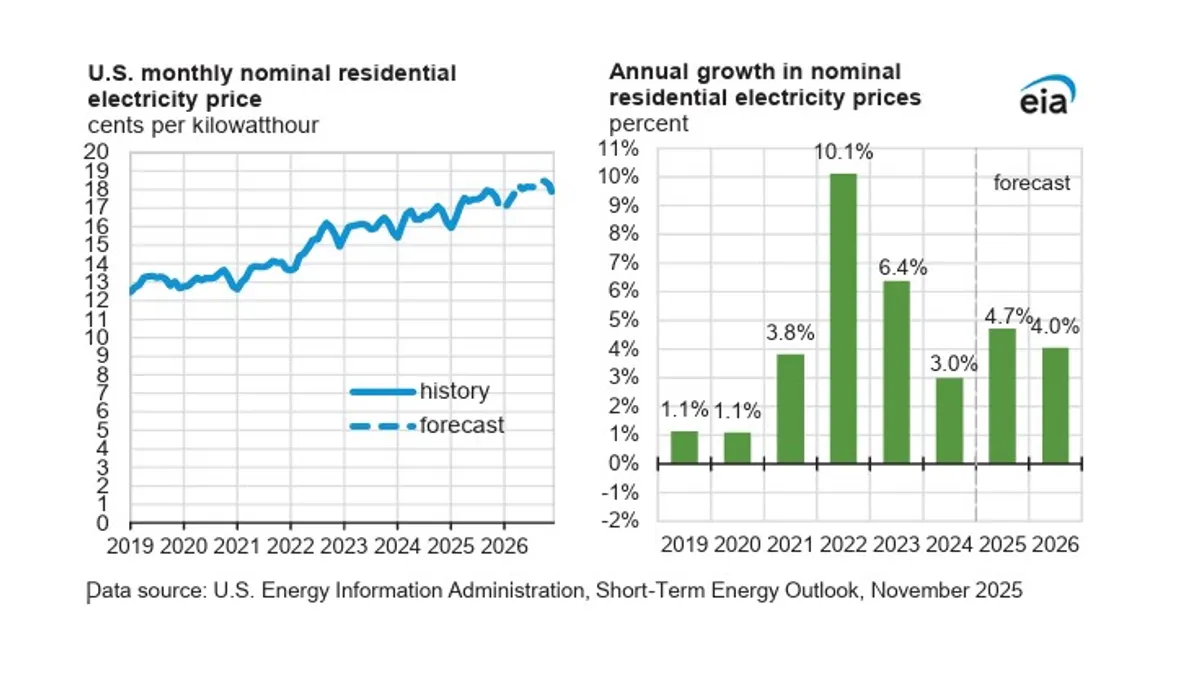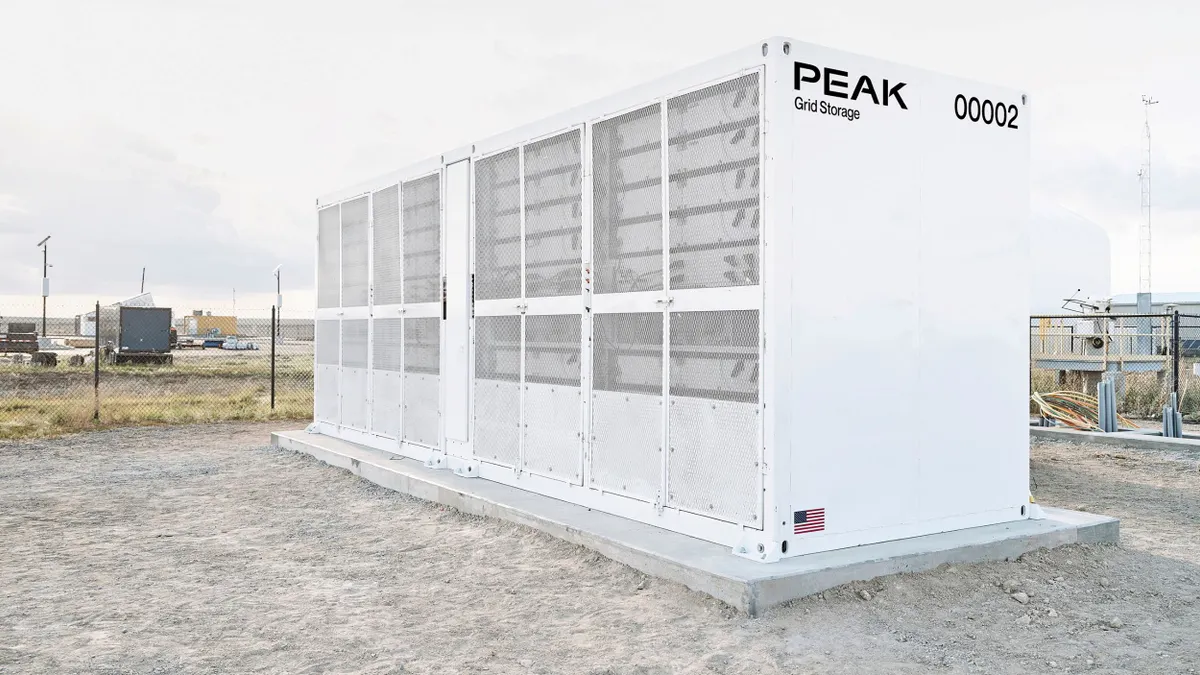Jackson A. Myers and Zakary Kadish are attorneys at the law firm MoloLamken.
Imagine the Federal Energy Regulatory Commission is considering proposed revisions to your regional transmission organization’s tariff. You support the revisions and get involved at the commission to advocate for them, but FERC rejects the proposal nonetheless. So, you petition a federal appellate court for review, asking the court to reverse FERC’s decision. You lose, but not because the court agreed with FERC’s order — it doesn’t even talk about that. Instead, the court says you couldn’t appeal in the first place, because you didn’t satisfy a legal requirement for seeking relief in federal court called “standing.”
This unfortunate scenario is more than a thought exercise — it happened in April in Entergy Arkansas v. FERC, No. 22-1334 (D.C. Cir.). Entergy intervened at FERC to support a Midcontinent Independent System Operator proposal that would require distributors to source half their capacity from outside of MISO’s capacity auction, such as through bilateral contracting. FERC rejected the proposal, so Entergy petitioned the U.S. Court of Appeals for the D.C. Circuit for review. But Entergy didn’t initially explain why it had standing to appeal, as the D.C. Circuit’s rules require. FERC pounced, arguing that Entergy couldn’t bring the appeal at all. The court agreed, dismissing the case without even addressing FERC’s decision.
Entergy Arkansas highlights a potential land mine when appealing a FERC decision: Participating at FERC doesn’t mean you necessarily get to appeal the commission’s decision, because the requirements for suing in federal court — standing — are more restrictive than those at FERC.
Participating at FERC vs. in federal court
Participation at FERC is wide open. Anyone may file a complaint challenging particular rates or RTO procedures. And anyone with “an interest” — self-defined — that “may be directly affected” by a FERC proceeding may seek to “intervene.” If no one opposes the request, the intervenor automatically becomes a full-fledged party to the case.
But stricter rules apply on appeal. Article III of the U.S. Constitution gives federal courts the power to hear only “cases” or “controversies.” The courts have interpreted that language to limit who can sue in federal court, including who can appeal from agency decisions. The most important of these restrictions is standing, also called “Article III standing.”
A party must show three things to have standing: injury, traceability and redressability. First, “injury”: Courts need to see that the party will lose money or suffer some other kind of concrete harm — it isn’t enough, for example, to think FERC’s decision makes bad policy. And if the harm will occur in the future, it has to be likely and “imminent,” rather than hypothetical or speculative. Next, “traceability”: It has to be FERC’s decision that causes the injury. “Redressability” — standing’s third component — is closely related: The court has to be able to fix (or prevent) your asserted injury if it rules for you.
The Entergy Arkansas case illustrates how these requirements work. Entergy advanced two arguments for standing. First, it argued that FERC’s rejection of MISO’s proposal would harm Entergy by impairing grid reliability. But the court said that theory failed the “injury” prong: The only impact would have been on long-term reliability, so Entergy’s injury was neither imminent nor certain enough. Alternatively, Entergy claimed that without the proposal’s bilateral contracting requirement, it wouldn’t be able to recoup its investment in generation resources. But the D.C. Circuit explained that just approving MISO’s proposal wouldn’t fix that problem; distributors would still have to contract with Entergy, and at prices sufficient for Entergy to recoup its investment. The injury therefore wasn’t sufficiently “redressable” by a favorable ruling.
The D.C. Circuit’s decision in Entergy Arkansas also underscores how important standing can be. If the party seeking review doesn’t have standing, the court must leave FERC’s decision in place and dismiss the petition, ordinarily without addressing the substance of the appeal. Moreover, courts have to examine standing themselves, even if no one raises the issue. That’s why the D.C. Circuit — the court that hears most FERC appeals — requires parties appealing agency decisions to affirmatively explain their standing to sue in their first brief.
Avoiding the standing land mine
With those basics in mind, how can you avoid stepping on this potential legal land mine? First, try to plan ahead. Think about injury, traceability and redressability as soon as you get involved in a FERC proceeding. And don’t just think — start building a record. While the D.C. Circuit explicitly allows parties to submit evidence about standing for the first time on appeal, the situation isn’t as clear in other courts. Just a couple of extra paragraphs in a motion to intervene at FERC can save headaches later on. And parties defending a FERC decision on appeal should also keep an eye on the petitioner’s standing — convincing the court the petitioner lacks standing is an equally effective path to victory.
Second, if an appeal seems likely, consider consulting attorneys with experience litigating standing and other federal appellate issues. Such attorneys can spot and address issues like standing before they become a problem. They can also assist at FERC, both by building a stronger record on standing and by helping frame issues with an eye toward the appeal. Appellate counsel will also likely know the appellate court’s procedural quirks, which can sometimes make the difference between victory and dismissal. In the Entergy Arkansas case, Entergy didn’t comply with the D.C. Circuit’s rule requiring discussion of standing in the opening brief. Although the court did ultimately address Entergy’s standing, the court said the failure to affirmatively argue standing in the opening brief was enough on its own to warrant dismissing the appeal.
Finally, if your Article III standing is in doubt, consider alternatives to seeking review yourself. If another party appeals, you can still usually submit a brief as a “friend of the court,” or “amicus curiae.” Although amici don’t have all the rights of a full party, filing an “amicus brief” still gets your viewpoint before the court and, hopefully, a victory for your side.






















